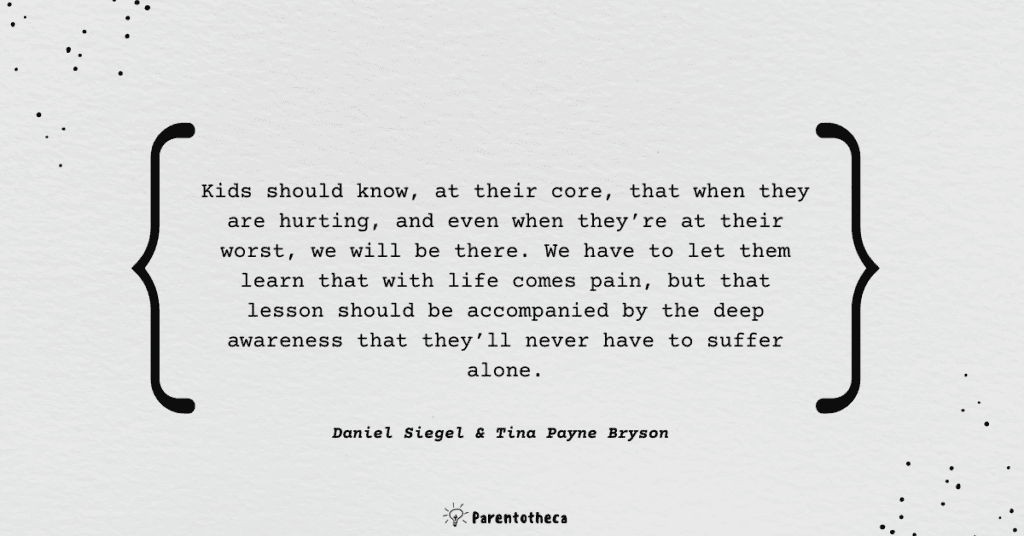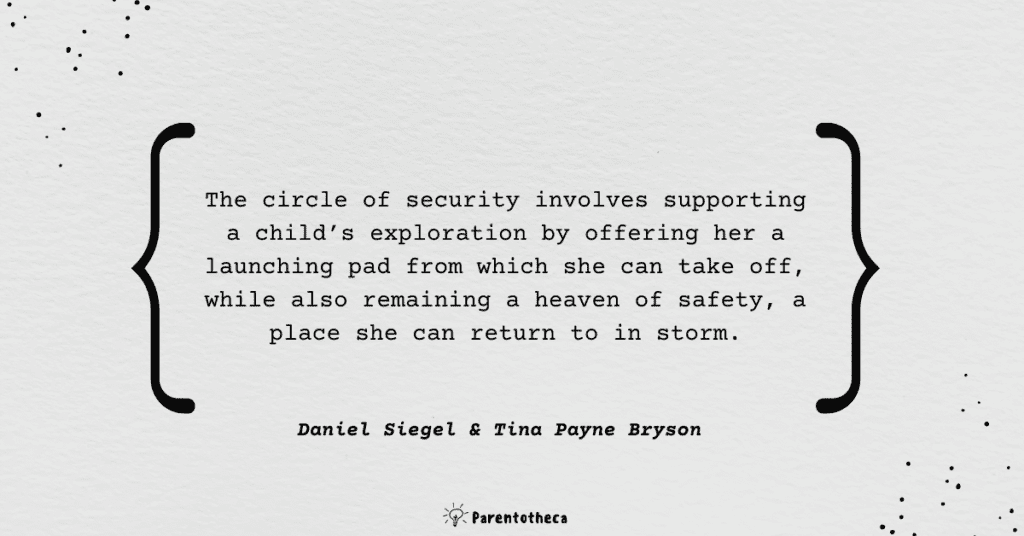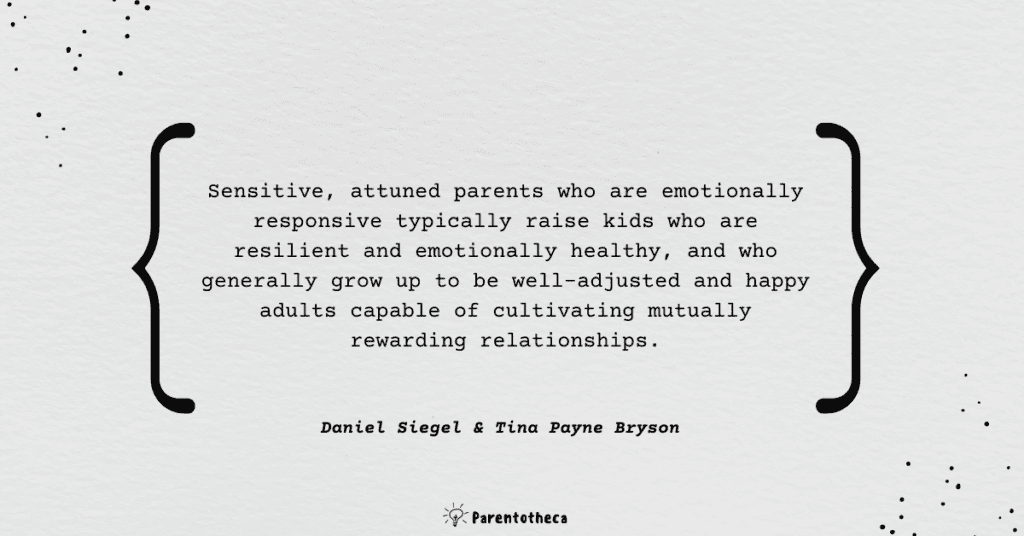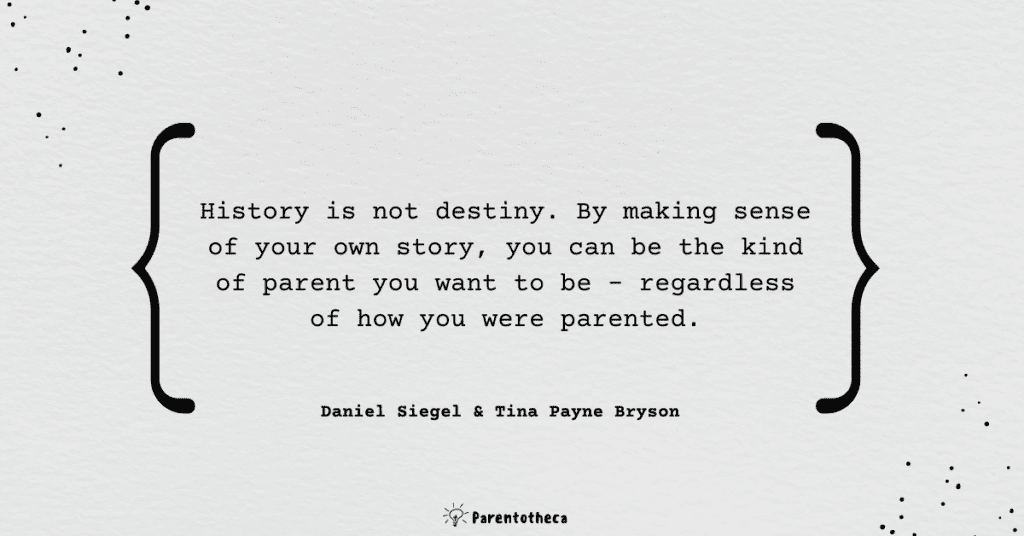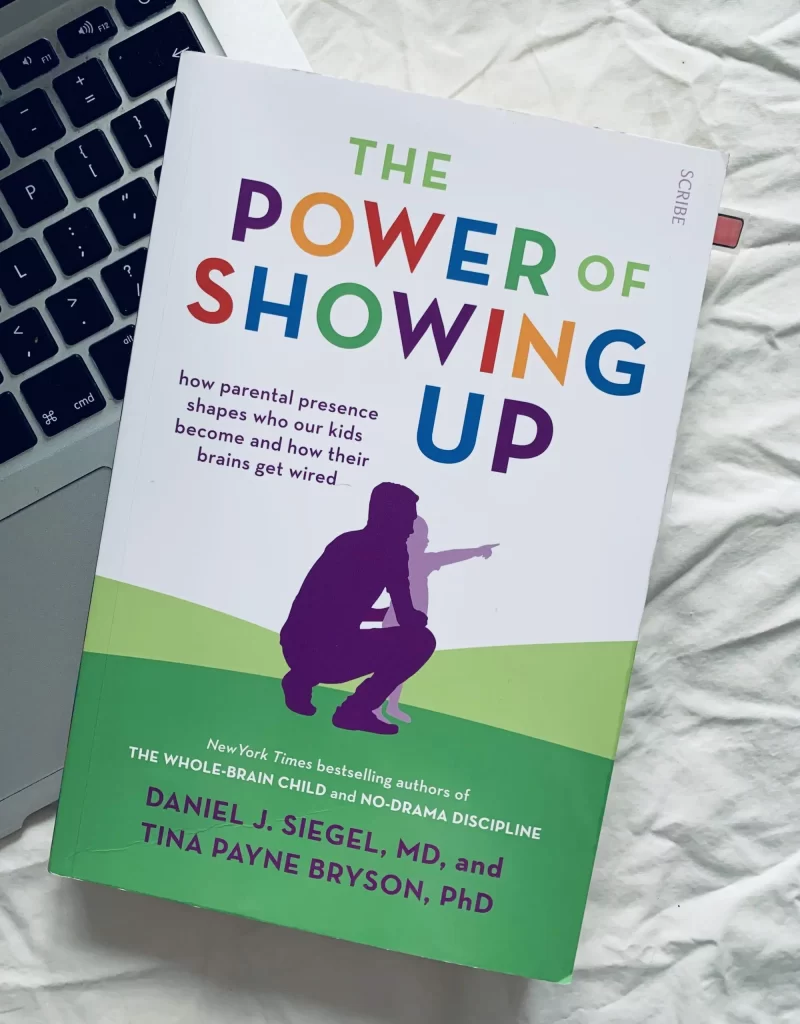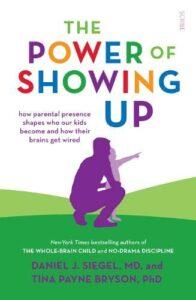 The Power of Showing Up
The Power of Showing Up
How Parental Presence Shapes Who Our Kids Become and How Their Brains Get Wired
Daniel J. Siegel and Tina Payne Bryson
Scribe UK (13 Feb. 2020)
About Dan Siegel and Tina Payne Bryson
Daniel J. Siegel, MD, received his medical degree from Harvard University and completed his postgraduate medical education at UCLA, where he is currently a clinical professor. He is the executive director of the Mindsight Institute, and the author of numerous books, including the bestsellers Mindsight and Brainstorm, as well as No-Drama Discipline and The Whole-Brain Child (co-authored with Tina Payne Bryson). He lives in Los Angeles with his wife and occasionally with his launched adolescents.
Tina Payne Bryson, PhD, is a pediatric and adolescent psychotherapist, parenting consultant, and the director of parenting education and development for the Mindsight Institute. A frequent lecturer to parents, educators, and professionals, she lives near Los Angeles with her husband and three children.
About the book:
“We’ve written this book for all the imperfect parents who care deeply about their kids (as well as for imperfect grandparents and teachers and professionals and anyone else who cares for a child). We have one central message full of comfort and hope: When you’re not sure how to respond in a given situation with your child, don’t worry. There is one thing you can always do, and it’s the best thing of all. Instead of worrying, or trying to attain some standard of perfection that simply doesn’t exist, just show up.
Showing up means what it sounds like. It means being there for your kids. It means being physically present, as well as providing a quality of presence. Provide it when you’re meeting their needs; when you’re expressing your love to them; when you’re disciplining them; when you’re laughing together; even when you are arguing with them. You don’t have to be perfect. You don’t have to read all the parenting bestsellers or sign your kids up for all the right enrichment activities. You don’t have to have a committed co-parent. You don’t even have to know exactly what you’re doing. Just show up. […]
The longitudinal research on child development clearly demonstrates that one of the very best predictors for how any child turns out – in terms of happiness, social and emotional development, leadership skills, meaningful relationships, and even academic and career success – is whether they developed security from having at least one person who showed up for them. Across cultures around the globe, these studies reveal a universal finding about how we can parent well, if not flawlessly.”
I’ve always been a fan of Dan Siegel’s and Tina Payne Bryson’s work. After reading The Whole-Brain Child and The Yes Brain Child, I was super excited to read The Power of Showing Up.
As Dan and Tina highlight at the beginning of the book, The Power of Showing Up is pretty much an introduction to all of their previous books – a deep dive into the science behind the ideas they’ve already shared with us.
Here Dan and Tina distil their parenting wisdom and answer a question that bothers many overwhelmed parents: What is the single most important thing I can do for my children to help them thrive in life? And, as the title suggests, the answer is pretty simple – we just need to SHOW UP.
Drawing on modern science and real-life examples, Dan and Tina highlight the importance of forming close relationships with our children and share knowledge and practical tools we all need to show up for them. They invite us to reflect on our own childhood to understand how it affects the way we parent our children and how we can all become better parents.
If you are looking for an insightful and practical parenting book, look no further. I highly recommend it.
I’m excited to share some of my favourite insights with you.
Let’s dive straight in.
Key insights:
The bond we form with our caregivers affects us long into adulthood
“We are all born with the innate drive to connect, and when that connection is reliably established and repairs are made in response to relational ruptures, then the brain can grow in optimal ways. When children are offered a secure attachment with their primary caregiver, these predictable and therefore reliable experience reduce their levels of stress and allow them to develop confidence and ultimately self-reliance. They learn how to manage their own feelings and behaviors, enabling them to flourish and thrive.”
Dan and Tina base the whole showing up idea on the attachment science. Therefore, they dedicated the book’s first two chapters to explaining how the bond we form with our parents (attachment style) impacts us in the long run and how it affects our children.
Drawing on fascinating research, including the classic Strange Situation experiment, they walk us through all four attachment styles: 1. secure; and insecure – 2. avoidant, 3. ambivalent, 4. disorganized. As you can guess, our primary goal is to help our children develop secure attachment.
Now. We often inherit attachment styles from our caregivers (e.g. parents and grandparents). That means if your parents were sensitive, attuned and emotionally responsive, you are more likely to form a healthy bond with them – what scientists call secure attachment. If you received inconsistent care and affection, or your needs often were not met, there is a big chance that you developed a form of insecure attachment, which significantly impacts you throughout life.
Your attachment will also have a significant effect on how you parent. In short, securely attached people are more likely to raise securely attached kids. People who were not as lucky in their childhood risk repeating their parents’ mistakes. To show up for their children, they must do loads of internal work on inherited insecure attachment issues first (aka earned secure attachment).
But Dan and Tina give us hope and share a crucial idea: Your history is not your destiny. No matter how many mistakes your parents made, you can still be the loving and sensitive parent who shows up and raises children who are happy, successful and fully themselves.
The first step to breaking the cycle of insecure attachment is to make sense of our childhood:
“We all need to develop a coherent narrative, where we can “tell the story” of our childhood – usually not to our kids, but to ourselves or those adults close to us. Reflecting on our experiences with our parents and other caregivers who impacted our development is important, and equally crucial is how we had to deal with what we experienced, or what we missed. […]
Without a coherent narrative, we’re likely to repeat the mistakes our parents made, passing down the painful legacy they learned from their own caregivers. But when we make sense of our experiences and work to comprehend our parents’ own woundedness, we can break the cycle and avoid passing down the inheritance of insecure attachment.”
So instead of blaming your parents for your traumas and passing down issues related to the insecure attachment, do your inner work first: reflect, understand how their caregivers wounded them and – most important – take responsibility for your actions. Your brain was wired in a certain way to survive in given circumstances in your family, but you can change your neural pathways by responding differently. Agency is super powerful.
To help us do that, Dan and Tina wrap up each chapter with a section called Showing Up for Ourselves, where they offer us to deeply reflect on our childhood experience and how it manifests in parenting our children. Definitely check out the book for more.
Question for you – what is your attachment style? Do you need to do some inner work to earn secure attachment?
4 S’s: helping children feel Safe, Seen, Soothed and Secure
“When a caregiver predictably (not perfectly) cares for a child, that child will enjoy the very best outcomes, even in the face of significant adversity. Predictable care that supports a healthy and empowering relationship embodies what we call the “Four S’s” – helping kids feel (1) safe – they feel protected and sheltered from harm; (2) seen – they know you care about them and pay attention to them; (3) soothed – they know you’ll be there for them when they’re hurting; and (4) secure – based on the other S’s, they trust you to predictably help them feel “at home” in the world, they learn to help themselves feel safe, seen and soothed.
When we can offer kids the Four S’s, making repairs whenever the inevitable ruptures in these connections with our children may occur, we help create what’s called “secure attachment,” and it’s absolutely key to optimal healthy development.”
Science says – kids who form secure attachment with their caregiver enjoy a happier and more fulfilling life. Even when they face adversity. These bonds are formed when parents constantly (and predictably) show up for them.
That means responding to their children’s needs by providing the Four S’s – helping them feel:
1. Safe
Children feel protected and sheltered from harm. Here we have two jobs to do: literally protecting them from harm and avoiding becoming a source of fear and threat for them. Three practical strategies: (1) Do no harm – “Make a commitment that you won’t be the source of fear in your home.” Work on your emotional triggers, self-control, and harmful addictions (if you have any). (2) Repair – “When there is a breach in your relationship with your child, reconnect as soon as possible and apologize if necessary.” The goal is to have a positive relationship with a child. No matter what. You can use the Playful Parenting approach for that as well. (3) Help your kids feel snug in a safe harbour – “Create within your home an overall environment of safety and well-being.” Work on emotional closeness and have reflective conversations about difficult situations and feelings. The goal is to make a child feel that you have their back no matter what happens.
2. Seen
Kids feel seen when we (1) attune to their internal mental state so they feel that “we get them”, (2) genuinely try to understand what’s going on inside their mind, (3) respond to their needs in a timely and effective manner. Two practical strategies: (1) Let your curiosity lead you to take a deeper dive – we need to remember that all behaviours are communication, and sometimes we need to play Sherlock to figure out what’s going on with our child. (2) Make space and time to look and learn – “Generate opportunities that allow your kids to show you who they are.”
3. Soothed
“When a child is in a state of internal distress, that negative experience can be shifted by an interaction with a caregiver who attunes to and cares for her. She might still suffer, but at least she won’t be alone in her pain. Based on this parent-directed ‘inter-soothing,” she’ll learn to provide “inner soothing” for herself.” Here is what you can do: (1) Build a calming internal toolkit – help your child develop simple tools and strategies so he can calm himself when an emotional situation arises. (2) Offer your P-E-A-C-E – more on that below.
4. Secure
It results from the first three S’s. “We give our kids a secure base when we show them that they are safe, that there’s someone who sees them and cares for them intimately, and that we will soothe them in distress. They then learn to keep themselves safe, to see themselves as worthy, to soothe themselves when things go wrong.” Here are two practical strategies: (1) Invest in a relational trust fund – you can build trust by regularly showing up for your child whenever he needs you. (2) Teach Mindsight skills – “teach your children to show up for themselves when they need to feel more secure.” Dan and Tina share practical strategies in The Whole-Brain Child (check out our notes for more).
At the end of the book, Dan and Tina share with us a refrigerator sheet – a brief summary of all the practical strategies they offer in the book. You can download it here.
P.S.: In How Children Succeed, Paul Tough shares fascinating research on how secure attachment affects kids on emotional, psychological and even biochemical levels – check out our notes for more. Also, check out our notes on Helen Pearson’s fascinating book The Life Project, where she shares the secrets of good parenting based on the longest study on human development (we also wrote an article, How To Be A Good Parent, based on the findings from that study).
Perceive. Make sense. Respond.
“How good are you at seeing your kids? We mean really seeing them for who they are – perceiving, making sense, and responding to them in these contingent ways, ways that are timely and effective. This is essentially how your child comes to experience the emotional sensation not only of belonging, or feeing felt, but also of being known. Science suggests – and experience supports – that when we show up for our kids and give them experience of being seen, they can learn how to see themselves with clarity and honesty. When we know our kids in a direct and truthful way, too. Seeing our kids means we ourselves need to learn how to perceive, make sense, and respond from a place of presence, to be open to who they actually are and who they are becoming. Not who we’d like them to be, and not filtered through our own fears or desires. Just look at them, know them, embrace them, and support them as they grow into the fullness of themselves.”
Our bond with children strengthens when they feel seen and feel felt. So, as Jasper Juul puts it, we must always take our kids seriously – their needs, feelings, ideas, etc.
To do so, Dan and Tina offer a simple framework to keep in mind– the triad of connection: Perceive, Make Sense, Respond.
They remind us that a child’s behaviour – especially challenging – is communication. So to communicate effectively back to the child, we need to pull Sherlock’s hat and dig deeper into the reasons behind the specific behaviour (reminds me of Mona Delahooke’s approach in Beyond Behaviours).
Seeing children also means accepting and celebrating their unique personalities – their interests, passions, ideas, and strengths. That idea resonates a lot with Shefali Tsabary’s wisdom in The Conscious Parent, where she writes:
“When you parent, it’s crucial you realize you aren’t raising a “mini-me”, but a spirit throbbing with its own signature. For this reason, it’s important to separate who you are from who each of your children is. Children aren’t ours to possess or own in any way. When we know this in the depths of our soul, we tailor our raising of them to their needs, rather than molding them to fit our needs.”
P.S.: To me, seeing our kids also resonates a lot with the Strength-Based Parenting approach from Lea Water’s fantastic book The Strength Switch – check out our notes for more.
Offer your P-E-A-C-E
“There are all kinds of techniques we can use and strategies we can try when our kids are upset. […] But the fact is that there is no magic bullet that will work every time, no “one right answer” for what to say or do to help your kids feel better when they’re hurting.
There is, though, an overall response to your children’s pain that will virtually always be correct. It may not always be effective in terms of helping your kids calm down, and it might not always immediately produce the results you desire. But in terms of showing up for your kids and demonstrating what love and soothing look like, it’s the right thing to do. You can offer your kids your P-E-A-C-E: your presence, engagement, affection, calm, and empathy.”
That’s a great framework for responding to your child’s big feelings. And it is very similar to the Connect and Redirect strategy from Dan and Tina’s other book, The Whole-Brain Child (check out our notes).
Often, all that kids need when they are hurting is you just being there right next to them, providing P-E-A-C-E:
P – Presence: put aside your stuff and try to connect with your child. Sometimes they’ll push you away, but your job is to let them know that they can come to you any time (e.g. “I’m going to give you some space now. I’ll be in the kitchen if you need me.”)
E – Engagement: that’s about active listening and using non-verbal communication to show your child how important he is to you (e.g. eye contact, back rub, a hug, soothing voice).
A – Affection: children need to feel that they are loved even when they are flooded with big feelings. So it’s important to communicate how much love you feel for your child with both words and actions.
C – Calm: that’s the hardest part. Simply because very often, we have our own big feelings flooding us, and we need to take control of our response. The authors offer to lower down below the child’s eye level to communicate “no threat” and show to a child that even though you are upset with him, but still available.
E – Empathy: that’s about letting the child feel felt. Check out our notes on Dan and Tina’s other book, The Yes Brain Child, where we discuss different facets of empathy – the empathy diamond.
When we can offer your P-E-A-C-E, we ensure that children will feel attuned to, cared for and loved – in short, they’ll feel soothed. Dan and Tina add:
“The repeated experience of interactive soothing leads to and internalized capacity to sooth herself when she needs it. In other words, when she learns, through experience, that someone will show up for her over and over again when she’s hurting, she’ll learn how to show up for her inner self, developing the ability to more autonomously sooth and regulate her own emotions.”
And, as Daniel Goleman notices in his book Emotional Intelligence, the art of soothing ourselves is a fundamental life skill! So when you show up for your children in a difficult moment and soothe them, in the long run, you help them develop Emotional Intelligence (EQ).
Calming internal toolkit
“In addition to consistently showing up to sooth our kids when they need us, one of the best ways we can build the neurological circuits for inner self-soothing is to give them specific tools they can use to create calm within themselves when inner chaos threatens to take over.”
In a difficult moment, when things get hot, and your child is fuming with big feelings, we show up by offering repeated experiences of interactive soothing (P-E-A-C-E). In calm and peaceful times, our job is to teach them tools that help them to manage their big feelings.
Here are the strategies Dan and Tina offer:
- Create a “calm cave” – a place where your child can retreat and recover when they feel strong emotions beginning to take over.
- Choose some soothing music – encourage your child to find a song that will help him to calm down. Classical, jazz or just nature sounds – whatever works for your child.
- Come up with a list of energy-releasing movements – dancing, running in place, burpees, yoga, or dribbling a ball.
- Come up with a distress signal – a code word they can use when they feel they need help. It can be whatever, even something silly like “a pink unicorn”, but then you will know that your child needs help with dealing with emotions – a hug, a talk, or just simply you being there when they cry.
What we need to remember here is that every child is different and will require different strategies for self-soothing. For example, our older son loves his “calm cave” and books to calm down. Our other boy needs physical activity to return to his green zone (bicycle and football do magic). The youngest finds colouring and drawing very soothing.
That also reminded me of Mona Delahooke’s wisdom in her absolutely fantastic book Beyond Behaviours, where she offers us to pay attention to our child’s sensory system to figure out what triggers stress response – e.g. strong scent, itchy label, loud noise – and what helps to calm the nervous system down – e.g. lavender scent, squishy fidget toy, calm music. Check out the book for more practical tools.
Action steps for you:
- Reflect on your childhood – which attachment did you form with your parents? Maybe consider grabbing a notebook and writing down your “childhood narrative”.
- Offer your P-E-A-C-E when your child is flooded with big feelings.
- To help your child feel seen, use the triad of connection when dealing with challenging behaviour or a problem your child is facing or when you feel anxious about your child pursuing a particular interest (perceive, make sense, respond).
Quotes from the book:


